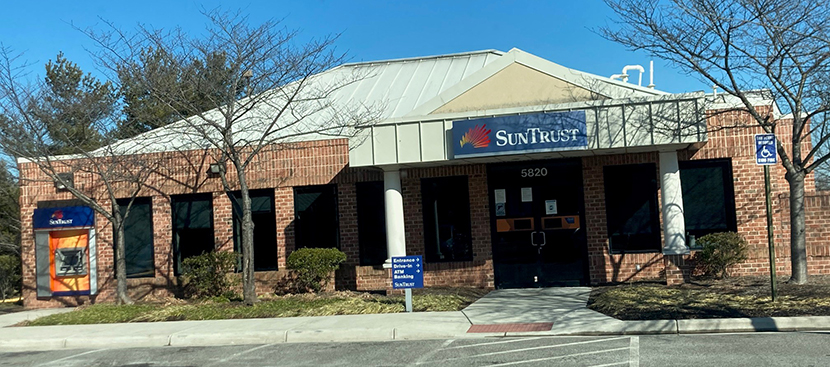
Banks Trimming Branches, Creating Empty Retail Storefronts

(SunTrust Bank (Truist) branch in Fairfax County, Va.)
Bank mergers and increasing online banking have led to numerous bank branch closings in recent years, which could have a “profound” effect on commercial real estate, said DBRS Morningstar, Toronto.
“While some banks will still open new branches, technology, digitalization and the need to reduce expenses have all contributed to the reductions in branches,” DBRS said in a new commentary, Banks Trim Their Branches, Adding to Empty Storefronts. “We expect this trend to continue, as the COVID-19 pandemic has accelerated digital banking acceptance, kept the interest rate environment low and pressured net interest margins, forcing banks to reduce costs.”
In just the past few weeks, TD Bank, KeyCorp and Huntington Bancshares all announced plans to close some branches. This past October, U.S. Bancorp said it would close 15 percent of its bank branches–including some supermarket branches–in 2021, DBRS reported.
“If this trend continues as we expect, the effect on commercial real estate vacancy will be profound,” the report said.
In addition to branch closures, banks are using less space for branches that remain open, DBRS noted. The average newly opened bank branch shrank to 2,500 square feet from 4,000 square feet on average a few years ago. The already-announced closings will likely return 3 million to 4.5 million square feet of retail space to the market for re-leasing at a time when demand for retail space is already shrinking, the report said.
DBRS identified 281 loans in 783 properties within commercial mortgage-backed securities that had bank branches averaging 6,048 square feet. “The average bank branch has small square footage for any one loan or portfolio loan, so a closed bank branch may not have a comparable effect that other closed retailers might have in terms of vacancy,” the report said.
Certain banking services still require bank branches, but branches might become less profitable given the growing acceptance of online banking. This could put more scrutiny on the sector, DBRS said. “Bank leases generally have credit tenants (often investment-grade credit ratings) and may actually receive long-term credit tenant treatment, resulting in a net benefit to the loan’s cash flow because of lower vacancy loss or leasing costs assumptions in our commercial real estate cash flow analysis if the lease term is long enough beyond the mortgage’s maturity date,” the report said. “However, now they may choose to close unprofitable branches, known as going dark, in advance of the lease’s expiration because the loss related to leasing costs may be less than the going concern of operating the branch. Some banks may own some of their branches, which may factor into their decision making over which branches to close.”
